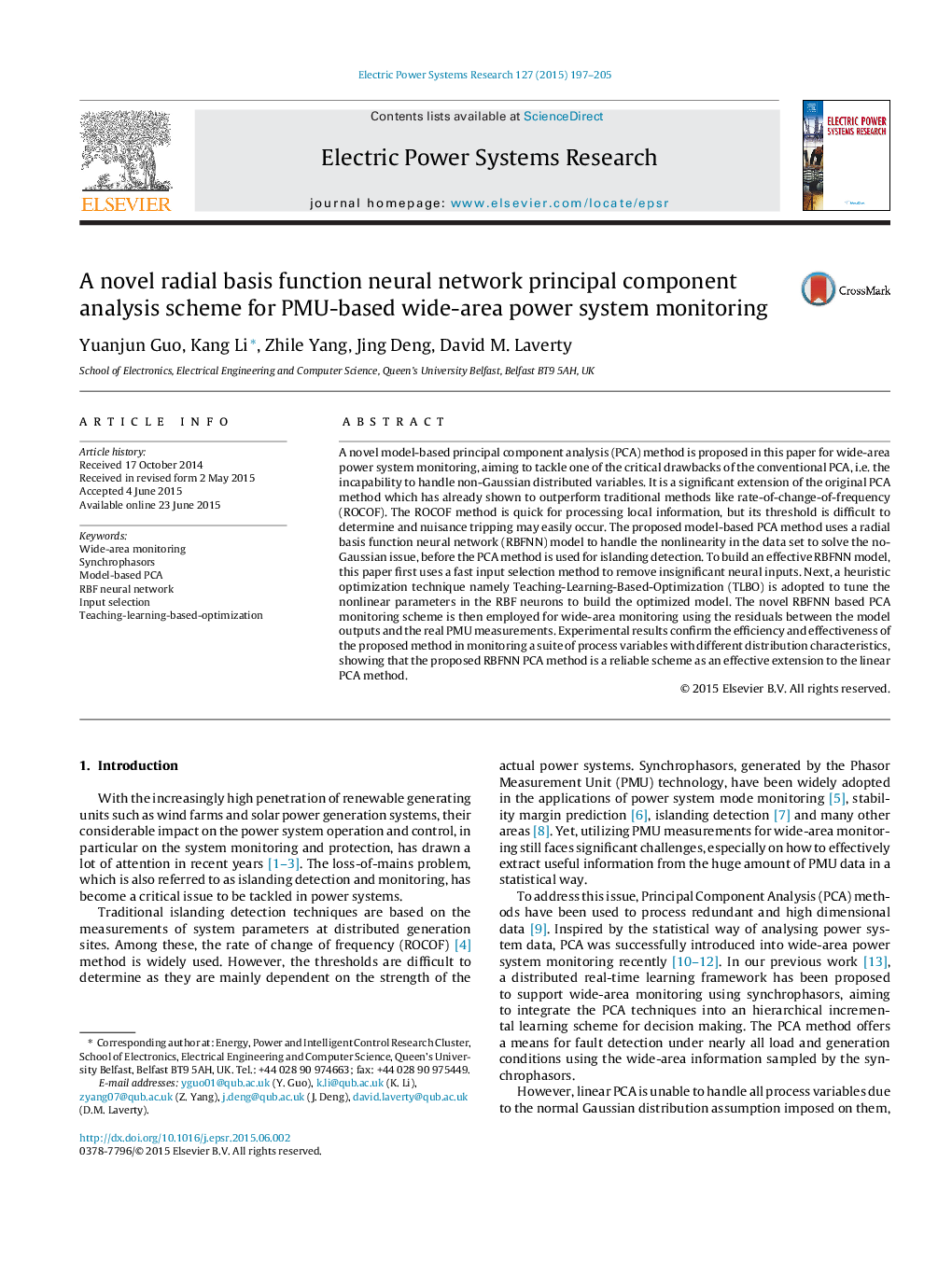| کد مقاله | کد نشریه | سال انتشار | مقاله انگلیسی | نسخه تمام متن |
|---|---|---|---|---|
| 704633 | 1460886 | 2015 | 9 صفحه PDF | دانلود رایگان |

• Automatically determine thresholds using PCA method for islanding detection.
• Neural inputs reduced by the fast input selection algorithm.
• Model accuracy increased by optimization of the RBF network parameters.
• RBFNN based PCA utilizes the non-Gaussian variables of the PMU measurements.
• Simple monitoring chart, easy to implement.
A novel model-based principal component analysis (PCA) method is proposed in this paper for wide-area power system monitoring, aiming to tackle one of the critical drawbacks of the conventional PCA, i.e. the incapability to handle non-Gaussian distributed variables. It is a significant extension of the original PCA method which has already shown to outperform traditional methods like rate-of-change-of-frequency (ROCOF). The ROCOF method is quick for processing local information, but its threshold is difficult to determine and nuisance tripping may easily occur. The proposed model-based PCA method uses a radial basis function neural network (RBFNN) model to handle the nonlinearity in the data set to solve the no-Gaussian issue, before the PCA method is used for islanding detection. To build an effective RBFNN model, this paper first uses a fast input selection method to remove insignificant neural inputs. Next, a heuristic optimization technique namely Teaching-Learning-Based-Optimization (TLBO) is adopted to tune the nonlinear parameters in the RBF neurons to build the optimized model. The novel RBFNN based PCA monitoring scheme is then employed for wide-area monitoring using the residuals between the model outputs and the real PMU measurements. Experimental results confirm the efficiency and effectiveness of the proposed method in monitoring a suite of process variables with different distribution characteristics, showing that the proposed RBFNN PCA method is a reliable scheme as an effective extension to the linear PCA method.
Journal: Electric Power Systems Research - Volume 127, October 2015, Pages 197–205